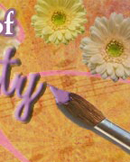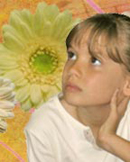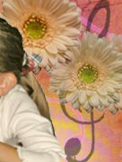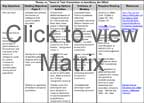As the reading pointed out the common barriers to creative thinking: habit and learning, rules and traditions, perceptual blocks, cultural blocks, emotional blocks, educational and resource blocks. Let’s review them quickly before we move on. As you read on, think about your classroom, where these blocks may be present, and these two questions:
- How do blocks of this nature affect our teaching?
- How do they affect our gifted students?
The panel below lists the common blocks to creativity. Click on the title of each block to read a description of the block.
- Habit and Learning and Rules and Traditions
- Perceptual Blocks
- Cultural Blocks
- Emotional Blocks
- Educational and Resource Blocks
From infancy we learn correct ways to respond to problem solving, we learn patterns of acceptable behavior. In school, we learn the same rules and traditions needed in order to conform to the standard norm of acceptable behavior. Once we enter the workplace, we are still driven by corporate rules, national norms, and standardized behavioral expectations that may prevent innovative thinking and problem solving.
Not being able to view something from a different perspective or accepting a new idea is a perceptual block. Familiarity can also make it difficult to see another way of doing things. The “We have always done it this way, why change?” attitude is a common perceptual block. It’s also a challenge to infuse a creative learning climate when pressures from social influences, expectations and conformity are added to the mix.
Cultural blocks are usually set by social or institutional norms. They not only include habits, rules, and traditions, they also relate to expectations and fears of being different. Every culture has its own set of expectations and pressures to conform; understanding how they impact creativity is your challenge. For example, some creative characteristics (such as expressiveness, unconventionality, and independent thinking) are frowned upon in certain cultures. How do these cultural characteristics impact creativity in your classroom? Culture determines how we view gender differences, stereotypes, time, relationships, competition, etc. Think about what happens when a student from another culture enters your new classroom? How does he/she balance the pressure to conform to the differences between the two cultures?
Emotional blocks, according to the author, interfere with clear thinking and therefore distract our creative minds. They may include: chronic anxieties and insecurities, the fear of being different or taking risks, or even pressures from work, finances, personal relations, and poor health. How else can emotional blocks play out in gifted students?
Educational blocks and resource blocks include lack of identified gifted students, misplacement in a specific content area (working on a higher level of math than the rest of the class and no differentiation for this), no gifted program offered, no choices in areas of interest, idea squelching, traditional instruction and lack of role models or like peers to interact. The lack of resources would include the lack of funding for materials and supplies, shortage of people to work with the gifted students, lack of specialized arts programming, not providing mentors or career counseling, time constraints, limited technology applications and research, and not utilizing community resources to get the gifted students motivated outside of the classroom setting.
 Teachers also bring blocks to the classroom, and we owe it to ourselves, and our students to break down our blocks and barriers. In this video a teacher shares how she overcame her block, not being creative enough to teach gifted students, and a NOVA University professor who teaches courses on creativity gives advice for other teachers who have a similar barriers. Click on the daisy to launch the video.
Teachers also bring blocks to the classroom, and we owe it to ourselves, and our students to break down our blocks and barriers. In this video a teacher shares how she overcame her block, not being creative enough to teach gifted students, and a NOVA University professor who teaches courses on creativity gives advice for other teachers who have a similar barriers. Click on the daisy to launch the video. 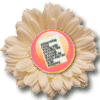 At this time, stop here and read Creativity and What Blocks It by David Bohm and F. David Peat. When you have finished reading, continue with the course content.
At this time, stop here and read Creativity and What Blocks It by David Bohm and F. David Peat. When you have finished reading, continue with the course content.



